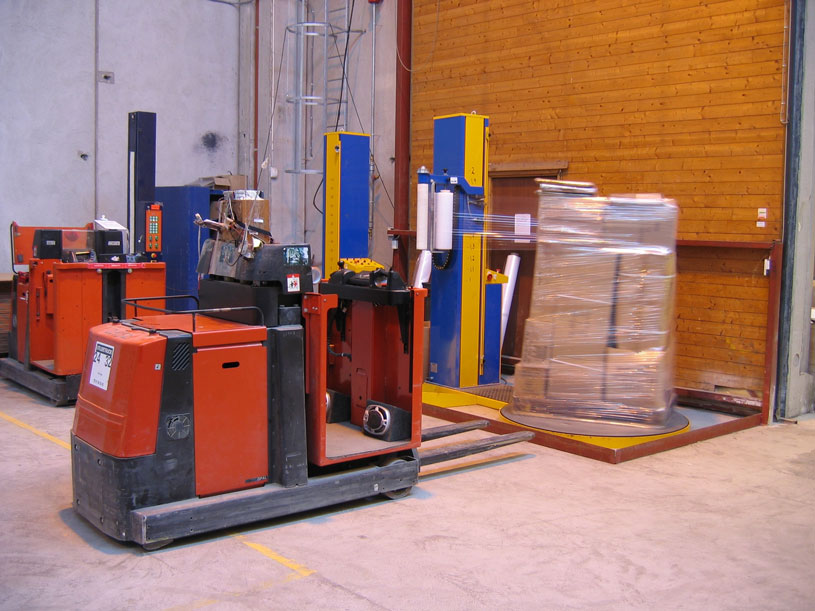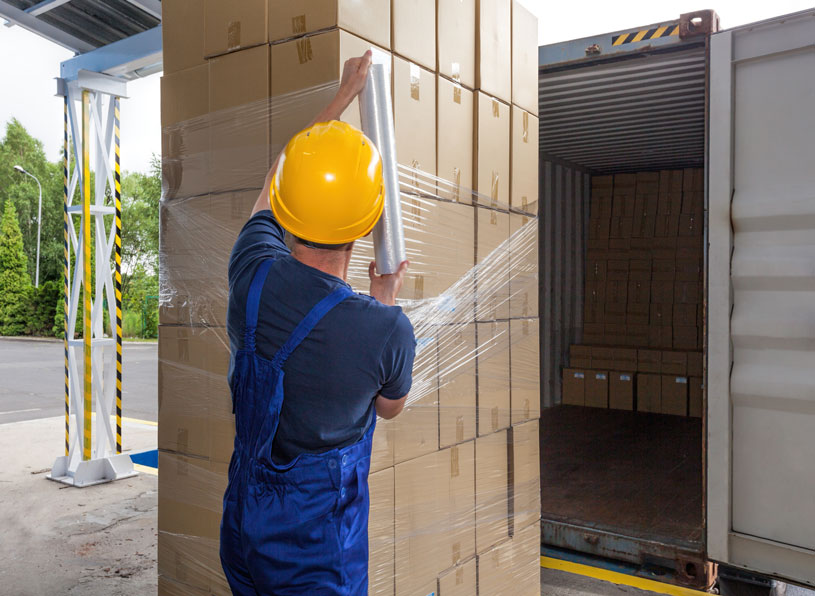Manual stretch wrapping pallets is false economy
Ineffective pallet wrapping is a major cause of damage to goods in transit, costing companies millions of dollars a year.
Stretch wrapping pallets by hand can seem like a money-saving alternative to investing in pallet wrapping equipment.
However this may be false economy if you’re wrapping a lot of pallets, as manual pallet wrapping is not only less effective than machine wrapping, it's less efficient too.
Plain Pallets is committed to bringing you information on safe and efficient ways to work with pallets. For more advice on pallet safety, get in touch with our friendly team here.
Reduces work-related injuries
If your business does a lot of manual stretch wrapping of pallets, you should be aware that it is a common cause of work-related injuries in the warehouse. It can lead to poor posture and bad OH&S practices. This can result in musculoskeletal injuries to areas like your:
- Shoulders
- Back
- Knees
- Wrists
- Fingers
- Forearms
Whether these injuries are caused suddenly or over time, those harmed may need to make WorkSafe claims and take time off work. Visit Workplace Victoria to learn more about the risks of manual stretch wrapping of pallets.
Makes the job easier

No matter how experienced you may be, stretching wrap pallets by hand effectively is challenging. People using hand-held stretch wrap dispensers naturally tend to wrap more tightly around the middle of a load than at the top and the bottom, leaving weak points.
They may also struggle to catch the pallet and the bottom of the load securely within the stretch wrap. Without a good bond between load and pallet, there is a much higher risk of the entire load sliding off its pallet during transit.
Increases productivity
If your business only wraps a small number of pallets, a hand-held stretch wrap dispenser may be an acceptable solution. However, if you find yourself wrapping high volumes of loads, it might be wiser to invest in pallet wrapping equipment.
Pallet machines not only do a better job of wrapping, protecting your valuable goods as much as possible, they also minimise injuries, reduce film waste and increase the productivity of your business.
There is a wide range of equipment available, ranging from basic manual stretch wrapper aids that minimise bending and twisting, to semi-automatic machines and fully automatic pallet wrapping machines designed to operate with all load types.
Tips for effective pallet wrapping
- Ensure the pallet is the right size: The pallet is the foundation of your load. Your load should fit snugly within the boundaries of your pallet.
- Special tip: Overhanging products are more likely to be damaged in transit. On the other hand, you don't want too much space between the side of your load and the edge of the pallet because this will cause the stretch wrap to tear on pallet corners.
- Pack your products together as tightly as possible: This will avoid crushed goods or slipping and sliding during transit and handling.
- Use the correct stretch wrap: There’s a wide range of stretch wrap films available to cater for different load shapes and types, wrapping methods, and shipping distances and modes.
- Use specialised wraps where necessary: For example, UV-stabilised film wraps should be used for pallets that may be stored outside for long periods of time.
Manual pallet wrapping, step by step

- Ensure there is enough space before you begin manually wrapping a pallet. Make sure you can access all sides of the pallet without difficulty.
- Elevate the pallet. This protects posture and movements to make it easier to wrap the base of the load and the pallet itself effectively.
- Securely attach the stretch wrap. One method is to scrunch some stretch wrap into a rope shape and thread this through one corner of the pallet to act as an anchor.
- Wrap the pallet and load base first.
- Repeat this process a couple of times to ensure that the wrap has a stronghold.
- Work your way upwards, always keeping the wrap tight to ensure that each layer is properly joined to the previous one.
- When you reach the top of the pallet, secure the load with two complete layers of wrap.
- Consider whether you need to do a second layer.
Depending on your business’s needs, consider alternatives to stretch wrapping such as shrink wrapping or tape wrapping.
Contact Melbourne's Plain Pallets for all your pallet needs. We stock a wide range of wooden, plastic and steel pallets. We specialise in used pallets, which are cheaper and better for the environment, and we deliver across Victoria.
Must Read
Plain Pallets on 29 April 2014
How to Get Greater Mileage out of Your Pallets
Do your pallets go the distance? If not, you may be losing money through replacement costs and damaged goods. Get the most out of your pallets ...
Read morePlain Pallets on 11 March 2014
Plain Pallets Display the Future of Sustainability
Pallets are always useful. See the many ways old pallets can be reused. Who knows, maybe your next house or business will have some great pallet furniture! ...
Read more